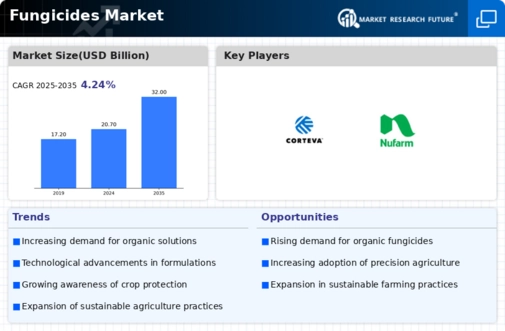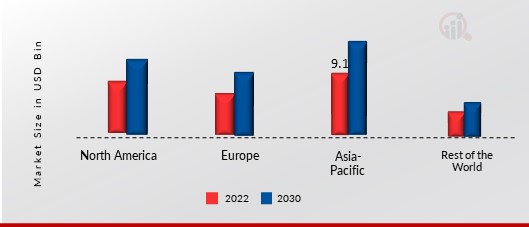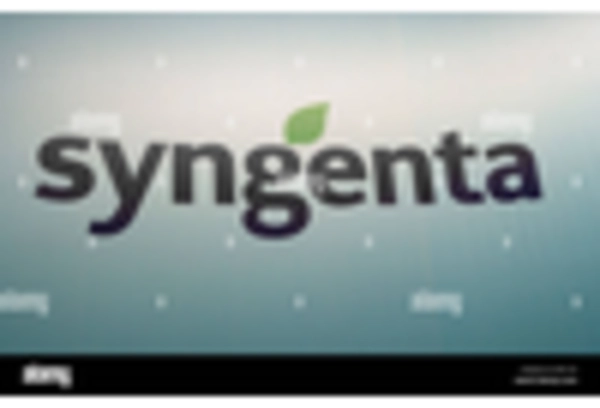Increasing Crop Production Demand
The rising demand for food due to population growth is a primary driver in the Fungicides Market. As the global population continues to expand, the need for increased agricultural output becomes paramount. This demand compels farmers to adopt advanced agricultural practices, including the use of fungicides to protect crops from diseases. In fact, the market for fungicides is projected to reach approximately USD 20 billion by 2026, reflecting a compound annual growth rate of around 5.5%. This growth indicates that the Fungicides Market is responding to the urgent need for enhanced crop yields and food security.
Rising Incidence of Plant Diseases
The prevalence of plant diseases is a significant factor influencing the Fungicides Market. With changing climatic conditions and increased agricultural intensification, the incidence of fungal infections in crops has escalated. This trend necessitates the use of fungicides to mitigate losses and ensure healthy crop production. Reports suggest that crop losses due to diseases can reach up to 30% in some regions, underscoring the critical role of fungicides in modern agriculture. Consequently, the Fungicides Market is likely to see sustained growth as farmers seek effective solutions to combat these challenges.
Regulatory Support for Sustainable Agriculture
Regulatory frameworks promoting sustainable agricultural practices are influencing the Fungicides Market. Governments and agricultural bodies are increasingly implementing policies that encourage the use of environmentally friendly fungicides. This regulatory support is likely to drive innovation and investment in the development of bio-based and less toxic fungicides. As a result, the Fungicides Market is expected to expand as manufacturers respond to these regulatory changes by introducing products that comply with new standards. This alignment with sustainability goals may enhance the market's growth trajectory in the coming years.
Adoption of Integrated Pest Management Practices
The integration of fungicides into broader pest management strategies is shaping the Fungicides Market. Farmers are increasingly adopting Integrated Pest Management (IPM) practices, which combine biological, cultural, and chemical methods to control pests and diseases. This holistic approach not only enhances the effectiveness of fungicides but also promotes sustainable agricultural practices. The market for fungicides is expected to benefit from this trend, as IPM practices encourage the judicious use of chemical inputs, thereby increasing the demand for targeted fungicide applications. This shift indicates a growing awareness of sustainable farming within the Fungicides Market.
Technological Innovations in Fungicide Development
Technological advancements in the formulation and application of fungicides are driving the Fungicides Market forward. Innovations such as nano-encapsulation and precision agriculture techniques are enhancing the efficacy and efficiency of fungicides. These technologies allow for targeted delivery and reduced chemical usage, which aligns with the increasing demand for environmentally friendly agricultural solutions. As a result, the market is witnessing a surge in the development of new fungicide products that are both effective and sustainable. This trend suggests that the Fungicides Market is evolving to meet the needs of modern agriculture.



















Leave a Comment